Install the app
How to install the app on iOS
Follow along with the video below to see how to install our site as a web app on your home screen.
Note: This feature may not be available in some browsers.
You are using an out of date browser. It may not display this or other websites correctly.
You should upgrade or use an alternative browser.
You should upgrade or use an alternative browser.
Avaruus
- Viestiketjun aloittaja Juke
- Aloitus PVM
Hänen kengissä olisin sijoittanut rahat niin että koneessa on enemmän potkua ja sillä olisi voinut tehdä jotakin muuta kuin vuoristorata hyppyjä.
Elonilta tilais moottorin ja homma hoitus. Mut ei taida noilla pojilla egot antaa periks ostella moottoreita mistä sattuu
No ei välttämättä. Kohtahan se varmaan nähdään lähteekö tämä avaruusturismi oikeasti käyntiin.Joo, ja kymmenen vuotta liian myöhässä... ei toi pärjää älyllisesti Elon Muskille. Eikä rahallisesti, todellakaan.
Eiköhän maailmassa ole näitä ihmisiä joilla on rahaa lyödä jokunen satatuhatta tuollaiseen kokemukseen.
Itse valitsisin kyllä tuon Blues Originin jos olisi lompsassa ylimääräistä.
What counts as a contribution?
Whether a crew member has made a contribution to space flight safety is up to the discretion of FAA officials. Over the past decade, the agency has awarded astronaut wings only to the pilots of spacecraft – the one exception was Beth Moses, a Virgin Galactic executive who flew aboard the company’s SpaceShipTwo craft in 2019. The main criteria seems to be that the astronauts must be designated as crew members performing some task aboard their flights, not simply passengers.
So will the passengers on the recent Virgin Galactic and Blue Origin flights be considered astronauts?
That’s a bit complicated. Virgin Galactic designated Branson and the other three passengers on his 11 July flight as crew members testing the spacecraft, but it’s not clear whether they “contributed to human space flight safety” in general.
Things are more clear-cut in the case of the 20 July Blue Origin flight: the spacecraft was entirely controlled from the ground, not by Bezos or any of the other three passengers, so all they had to do was enjoy the ride. That means that they wouldn’t qualify for astronaut wings under the FAA’s new rules.
Are there any exceptions?
The agency is allowed to give honorary wings to “individuals who demonstrated extraordinary contribution or beneficial service to the commercial human space flight industry”, but who didn’t satisfy the other eligibility requirements. So Wally Funk, a passenger aboard the flight who trained to be an astronaut in the 1960s but didn’t get to go to space back then, may still get her astronaut wings.

Who counts as an astronaut? Not Jeff Bezos, say new US rules
People who take commercial flights to space generally won't qualify for astronaut wings Space tourism is ramping up with the recent flights to space of billionaires Richard Branson and Jeff Bezos aboard their respective companies’ spacecraft, but not every person who goes to space is officially...

fulcrum
Greatest Leader
Avaruuden Olkiluoto 3, Nauka-moduuli, liitettiin viimein ISS:ään vain 14 vuoden viivästysten jälkeen:
https://www.bbc.com/news/science-environment-58013283
Kyseessähän on alkujaan Zarjan, eli FGB:n varakappaleeksi tehty FGB-2. Lienee viimeinen merkittävä moduli joka ISSiin enää laitetaan?
https://www.bbc.com/news/science-environment-58013283
Kyseessähän on alkujaan Zarjan, eli FGB:n varakappaleeksi tehty FGB-2. Lienee viimeinen merkittävä moduli joka ISSiin enää laitetaan?
Lienee viimeinen merkittävä moduli joka ISSiin enää laitetaan?
Kaupalliset seuraavaksi ja naukassa on laajennus varaa.
Russia’s troubled Nauka laboratory module has caused a fright when its rockets accidentally fired after docking the with the International Space Station, briefly throwing the station out of position.
A few hours after docking, Nauka’s propulsive devices unexpectedly fired, forcing personnel aboard the ISS to fire thrusters on the Russian segment of the station to counter the effect.
The module started firing “inadvertently and unexpectedly, moving the station 45 degrees out of attitude,” Nasa said on Twitter. “Recovery operations have regained attitude and the crew is in no danger.”
Russia’s Roscosmos space agency attributed the issue to Nauka’s engines having to work with residual fuel in the craft, Tass news agency reported.

Russia rocket mishap briefly nudges International Space Station out of position
After several ‘hiccups’ on the journey to the ISS, the Nauka lab module accidentally fired its rockets after docking
Rambo
Majuri
Ennennäkemätön havainto: Tutkijat näkivät ensi kertaa mustan aukon taakse – Vahvistaa yleisen suhteellisuusteorian
Teleskooppeihin kantautui röntgensäteilyä mustan aukon takaa, mikä osoittaa Einsteinin yleisen suhteellisuusteorian toimivan käytännössä.
fulcrum
Greatest Leader
Ainiin Prichalhan sinne on tulossa vielä tänä vuonna, tosin se on vaan telakointikeskus.Kaupalliset seuraavaksi ja naukassa on laajennus varaa.
ISS alkaa kuitenkin olla jo vanha ja merkittävät tieteelliset modulit ei ehkä ole enää hyvä investointi. Vanhimmat modulit on yli 20 vuotta vanhoja: Mir ajettiin alas 15 vuoden iässä ja sitä pidettiin vaarallisen ikäloppuna. Oliko niin että 2030 on tällä haavaa operointia ainakin tarkoitus jatkaa.
Vanhimmat modulit on yli 20 vuotta vanhoja: Mir ajettiin alas 15 vuoden iässä ja sitä pidettiin vaarallisen ikäloppuna. Oliko niin että 2030 on tällä haavaa operointia ainakin tarkoitus jatkaa.
Avaruuden mittakaavalla se ei ole ollut siellä edes silmänräpäytystä mutta meille se on ikäloppu. Isoin ongelma on sen kiertorata. Se on aivan liian lähellä maata notta sille voisi rakentaa jotakin pysyvämpää. Mutta tuskin kukaan varmaan haluaa hilata sitä korkeammalle.
Viimeksi muokattu:
Avaruuden mittakaavalla se ei ole ollut siellä edes silmänräpäytystä mutta meille se on ikäloppu. Isoin ongelma on sen kiertorata. Se on aivan liian lähellä maata notta sille voisi rakentaa jotakin pysyvämpää. Mutta tuskin kukaan varmaan haluaa hilata sitä korkeammalle.
Venäläiset voi sen vahingossa tehdä joku kerta kuten yläpuolelta voimme nähdä
 On kyll melkoista touhua taas. Eka ollaan vaatimattomat 14v myöhäs sit ruetaan väärälle radalle siirtelemään asemaa ku uusi hieno moduuli päätti itse käyttää moottoreitaan. Taitas olla turvallisempi irrottaa samantien tämä viritys ja tiputtaa ilmakehään vaan.
On kyll melkoista touhua taas. Eka ollaan vaatimattomat 14v myöhäs sit ruetaan väärälle radalle siirtelemään asemaa ku uusi hieno moduuli päätti itse käyttää moottoreitaan. Taitas olla turvallisempi irrottaa samantien tämä viritys ja tiputtaa ilmakehään vaan.tulikomento
Supreme Leader
The International Space Station actually spun one and a half times last week after the just-docked Russian Nauka module unexpectedly fired its thrusters.
NASA earlier said the sudden and inadvertent rocket burn nudged the ISS 45 degrees out of attitude. Zebulon Scoville, a flight director working at the US space agency’s mission control in Texas at the time of the accident, today said the effects of Nauka’s engines randomly firing were greater than previously reported.
The ISS in fact rotated a total of 540 degrees from the thruster fire, and had to flip another 180 degrees to get back into the correct position, he told the New York Times. The 45-degree angle disclosed by NASA soon after the blunder – which Russia blamed on a software failure in its Nauka module – was what it was reported by the crew as their station was still moving, we’re told. The final number became apparent later.
Scoville – who wasn't even supposed to be working that day, and was overseeing operations for a colleague tied up in meetings – stressed that the space station was not spinning out of control, and that the seven people aboard the orbiting lab were not in danger. A "spacecraft emergency" was declared, however.
“Post-event analysis showed that we experienced an approximate total change of 540 degrees in attitude,” a NASA spokesperson told The Register.
“Both values are still correct – 45 degrees was the total change at that moment in time, 540 was the total determined after the event concluded – there’s just been some interpretation issues over what that 45 represented when it was reported.”
The thrust generated by Nauka’s engines overpowered the four large spinning gyroscopes that ordinarily keep the platform steady, resulting in an undesired change in attitude at a rate of less than a degree a second. Measuring 73 metres long and 109 metres wide, and with a mass of more than 400,000 kilograms, it was a hefty vehicle to shift.
The Nauka had rendezvoused with the ISS on July 29 at 1329 UTC, and about three hours later, at 1634 UTC, its thrusters began randomly firing in an attempt to separate from the station. The ISS then fired its own thrusters, including those on an attached cargo ship, to compensate for Nauka’s thrust and ultimately correct its position.
“Yeehaw! That. Was. A. Day,” Scoville tweeted after the debacle, which lasted about an hour. Nauka was sent commands by its controllers to not only shut off its engines but also to ensure they wouldn't unexpectedly fire again.
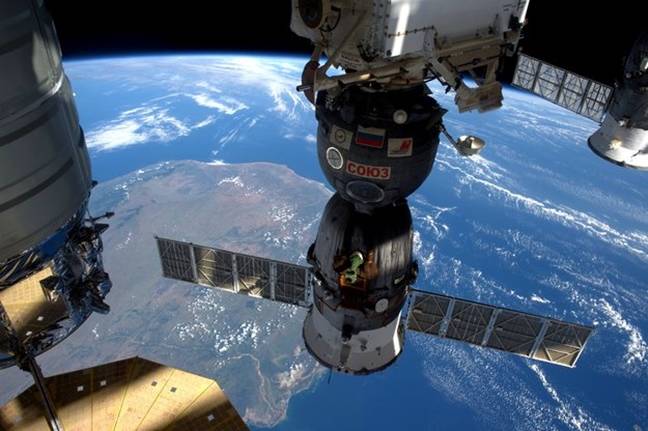
International Space Station actually spun one-and-a-half times by errant Russian module's thrusters
540 degrees total, not just 45, NASA tells El Reg
Joo tuli itse tost katsottua video aikaisemmin jo missä olivat laskeneet et alunperin ilmoitettu ei voinut pitää millään paikkaansa ku oli tiedossa kuinka kauan ainakii laitos pyöri ja mitä kyytiä ni meni reilusti yli ja sit iskivät liven poikki ni tarkkaa eivät saaneet selville sillo laskettua mut et yli mentiin ja reilusti.
ISS heitti häränpyllyä kun venäläismoduuli kytkettiin. Johtuu kai siitä, kun se tehtiin niin hätäseen 

 tekniikanmaailma.fi
tekniikanmaailma.fi

 gizmodo.com
gizmodo.com

Kansainvälisen avaruusaseman onnettomuus oli luultua dramaattisempi – ISS teki 1,5 ”takaperinvolttia” ja päätyi ylösalaisin
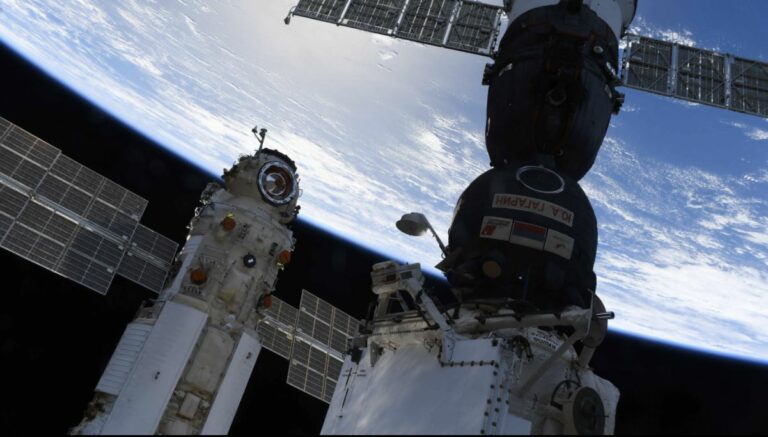
Nauka-moduuli vasemmalla. Vieressä venäläinen Sojuz-avaruusalus.
TEKSTI TEKNIIKAN MAAILMA
KUVAT NASA
Maata kiertävällä Kansainvälisellä avaruusasemalla (ISS) koettiin viime viikolla kauhunhetkiä, kun vasta asemaan kiinnitetyn venäläisen tutkimusmoduulin säätöraketit laukesivat yllättäen. Maailmalla uutisoitiin laajalti, että töytäys sai ISS:n hetkeksi kallistumaan.
- Jaa Facebookissa
- Jaa Twitterissä
- Jaa sähköpostilla
Nyt Gizmodo-sivusto kuitenkin uutisoi välikohtauksen olleen todellisuudessa raportoitua dramaattisempi. Venäläisen Nauka-moduulin säätöraketit nimittäin saivat ISS:n tekemään ”takaperinvoltteja”, sanoo Nasan päivystävä lennonjohtaja Zebulon Scoville.
SCOVILLEN MUKAAN avaruusasema pyörähti akselinsa ympäri 540 astetta, tehden siis 1,5 ”volttia” taaksepäin. Avaruusasema pysähtyi paikoilleen ylösalaisin, jonka jälkeen sen asema korjattiin. Tilanne kesti kokonaisuudessaan vajaan tunnin. Nasan alkuperäisen lausunnon mukaan avaruusasema keikahti vain noin 45 asteen verran.
Nasan mukaan ISS:n seitsenhenkinen miehistö ei ollut akuutissa vaarassa. Gizmodon haastatteleman Harvard-Smithsonianin astrofysiikan avaruuskeskuksen tutkija Jonathan McDowellin mukaan kyse oli kuitenkin ”yhdestä vakavimmista tapahtumista avaruusaseman 24-vuotisen historian aikana”. Pahimmillaan hallinnan menettäminen olisi hänen mukaansa voinut johtaa aseman hajoamiseen.
Avaruusasema alkoi kallistua 0,56 asteen sekuntivauhtia, ja tilanteen teki erityisen huolestuttavaksi se, että Nauka-moduuli vastaanottaa komentoja vain Venäjältä. Tällainen kallistumisnopeus olisi asiantuntijoiden mukaan ollut riittävä aiheuttaakseen rakenteellisia vaurioita ISS:lle. Avaruusasemaan menetettiin yhteys kaksi kertaa välikohtauksen aikana, sillä sen antennien pitää osoittaa Maata kohti yhteyden ylläpitämiseksi.
AVARUUSASEMAN KIERTOLIIKE saatiin pysäytettyä Zvezda-huoltomoduulin säätörakettien avulla, jotka työnsivät asemaa päinvastaiseen suuntaan. Lisäapua saatiin Progress-rahtialuksen rakettimoottoreista. 15 minuuttia kestänyt köydenveto päättyi Naukan säätörakettien äkilliseen sammumiseen, todennäköisesti polttoaineen loppumisen seurauksena.
ISS:llä ei ole myöhemmin havaittu välikohtauksesta johtuvia uusia ongelmia. Lisää aiheesta täällä.
Kansainvälinen avaruusasema Nauka-moduulin kanssa.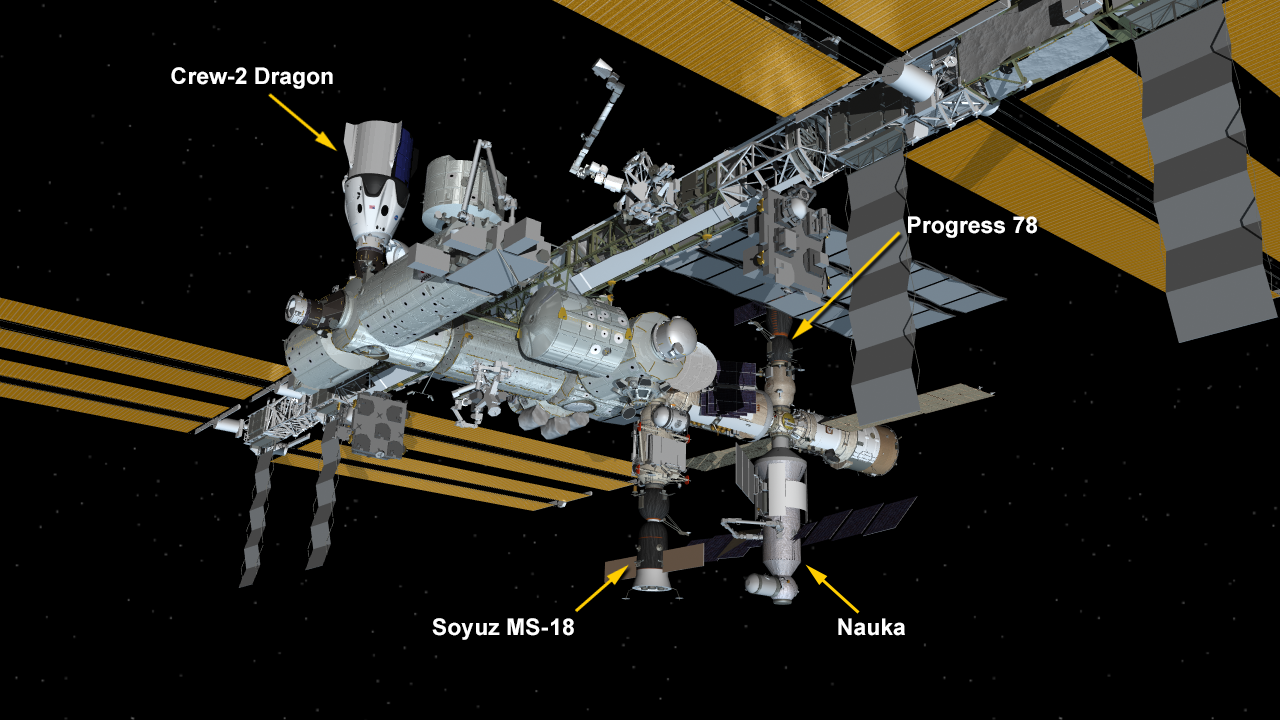

Kansainvälisen avaruusaseman onnettomuus oli luultua dramaattisempi – ISS teki 1,5 ”takaperinvolttia” ja päätyi ylösalaisin
Maata kiertävällä Kansainvälisellä avaruusasemalla (ISS) koettiin viime viikolla kauhunhetkiä, kun vasta asemaan kiinnitetyn venäläisen tutkimusmoduulin
 tekniikanmaailma.fi
tekniikanmaailma.fi

The ISS Backflipped Out of Control After Russian Module Misfired, New Details Reveal
Initial reports said the space station spun 45 degrees. The actual figure is far scarier.
Virgin Galactic has said it will open ticket sales on Thursday for space flights starting at $450,000 a seat, weeks after the company’s billionaire founder, Richard Branson, took a high profile flight to to the edge of space.
The space-tourism company said Thursday it is making progress toward beginning revenue flights next year. It will sell single seats, package deals and entire flights.

Virgin Galactic to sell space flight tickets starting at $450,000 a seat
The company said it will have three consumer offerings: a single seat, a multi-seat package and a full-flight buy out
 450k vuoristorata elämys. Ennemmin maksaisin sen 5k per yö StarWars hotellissa kuin tuon summan vuoristoradasta.
450k vuoristorata elämys. Ennemmin maksaisin sen 5k per yö StarWars hotellissa kuin tuon summan vuoristoradasta.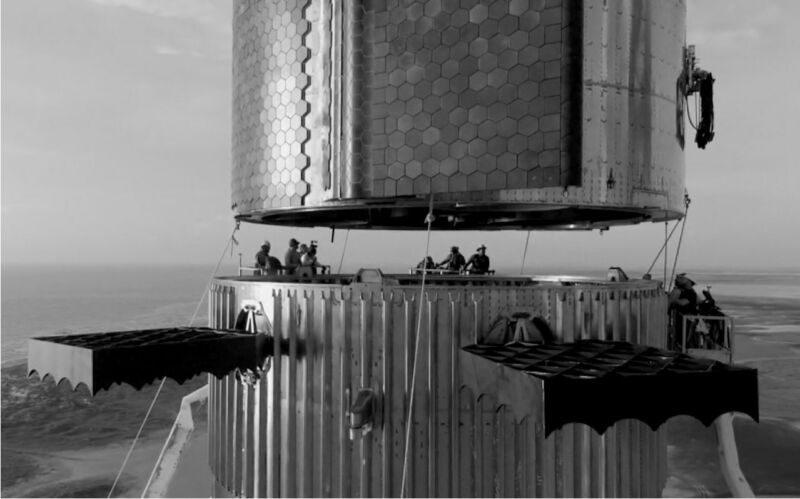
2021
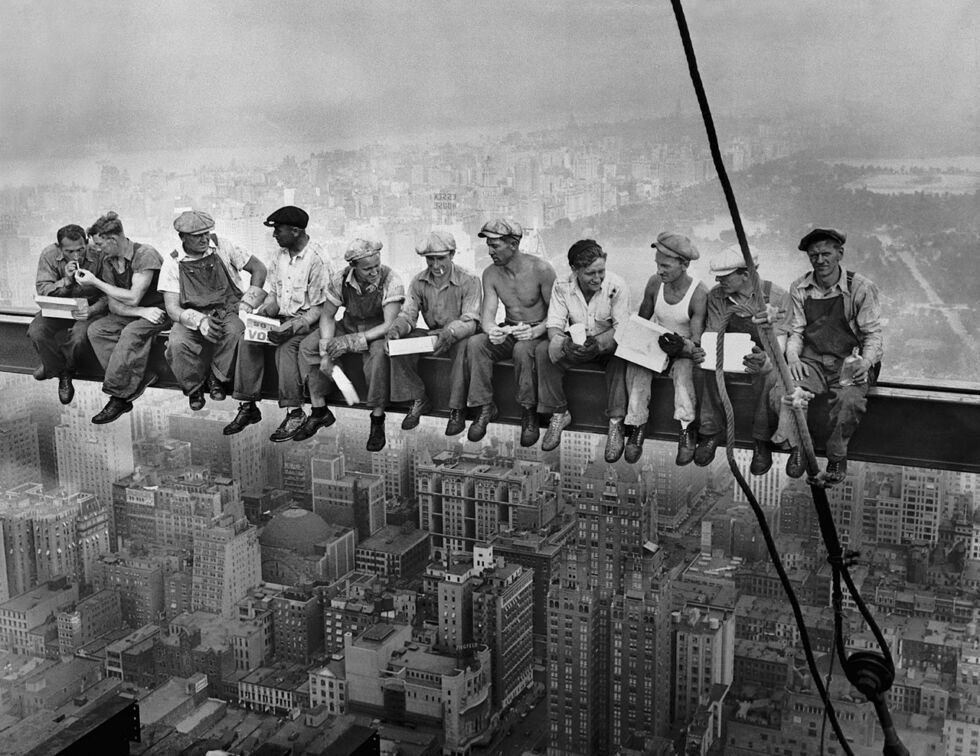
1932

With a single photo, SpaceX sent a not-so-subtle message to FAA regulators
Holding back Starship means holding back this progress, Musk was saying.
 arstechnica.com
arstechnica.com
Hawk oli minun aikanani +9 ja -4,5.Jep, kunhan ei ole miinus-g... siinä on limiitit aika matalissa numeroissa. -1,5 alkaa olla ongelma peruspilotille, -2,5 niin lähtee F-18 Hornetistakin siivet irti.
